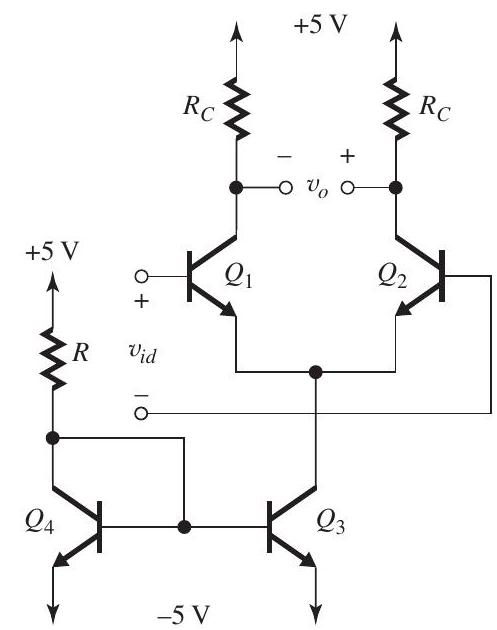
Figure 9.3.1
For the amplifier in Fig. 9.3.1:
(a) Assuming and have very high values, determine the value of that will provide a dc current of for each of and . (b) Assuming and have very high values, determine the value of that results in a dc voltage of at the collectors of and .
(c) What is the input common-mode range for this differential amplifier?
(d) Determine the value of the differential voltage gain .
(e) Determine the value of the input differential resistance, . Assume .
(f) If it is required to raise the value of by factor of 5 by including a resistance in the emitter of each of and , what value of is required? What is the resulting value of the differential gain?
(g) If the transistors have an Early voltage , calculate the worst-case value of the common-mode gain resulting from the resistances having finite tolerances of . Hence, find the value of the CMRR of the original amplifier (i.e., the one without the resistances included).
(h) With the two input terminals grounded, calculate the value of the worst-case differential dc voltage at the output resulting from the resistances having finite tolerances of . Hence, find the input offset voltage of the original amplifier (i.e., the one without 's).
Correct Answer:
Verified

